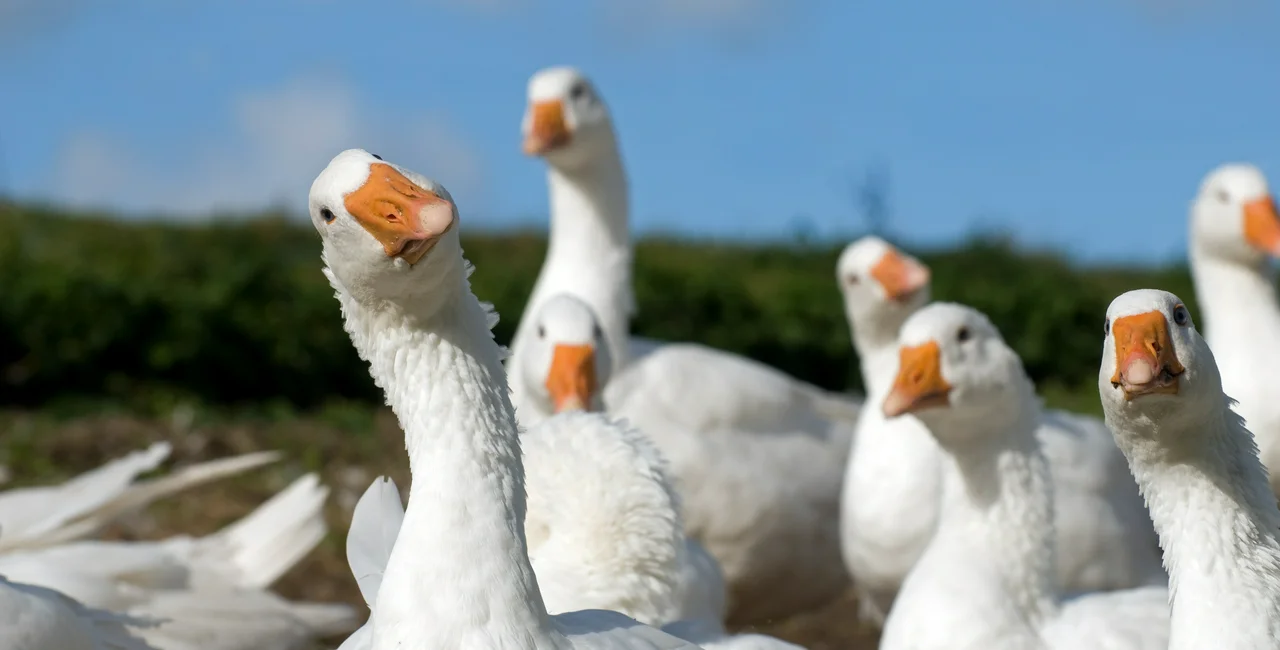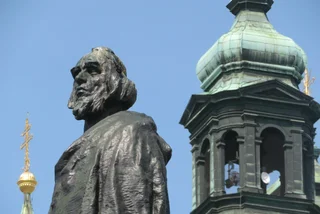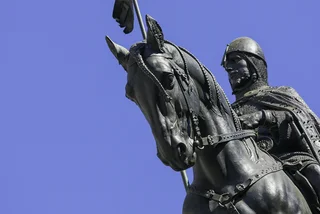How St. Martin’s Day came to be a festival of indulging in freshly made wine and roasted goose as well as the day to predict the weather of the coming winter is a bit of a mystery.
Festivals for St. Martin’s Day often start with an actor portraying the saint, dressed in a long red robe, arriving on a white horse. This is perhaps the easiest part of his tale to explain.
If you haven't already made plans for the holiday, you can see a list of restaurants and related events for marking St. Martin's Day in and around Prague here.
Martin, according to Catholic tradition, was a fourth-century Roman soldier who converted to Christianity as a young man. His legend says that while he was preparing to be baptized, he was riding his white horse and saw a beggar.

He cut his cloak in half and gave part to the beggar. Jesus appeared to Martin that night in a dream, and the next day Martin’s cloak was restored to its full length.
A predictor of the coming season
St. Martin is said to have died on Nov. 8, 397, and he was buried three days later, making Nov. 11 his feast day. This coincides with the typical start of wintry weather in Central Europe.
There are folk weather sayings for almost every day, but only a few such as the ones of St. Martin or St. Medard are still widely remembered. Before modern meteorology, people had to rely on such sayings to plan for the coming season.
PARTNER ARTICLE
The main saying is “Martin is coming on a white horse” meaning that snow should be expected soon. Another warns that if the geese on St. Martin's Day stand on ice, they will walk in mud at Christmas.
Other bits of wisdom state that if St. Martin is under a cloud, it will be an unstable winter; if it is clear, it will be a harsh winter. If he is shrouded in fog, it will be a mild winter. The accuracy of these is a bit hit-and-miss.
Betrayed by cackling geese
The connection of St. Martin to geese comes from a rather odd legend. Martin, after his conversion, became a very devout man and spent a lot of his time tending to the poor and sick. He was quite modest, though.
The tale says he was tricked into coming to Tours, a city in what is now France, in 371 A.D. on the pretense that a sick person needed his help. The townspeople, though, intended to corner him at the local church and force him to become their bishop.
When he somehow found out the real reason, he hid in a barn to avoid the ceremony. The cackling of the geese gave him away. A rather disheveled and feather-covered Martin was then led to the local church and made into a bishop. This is why he is sometimes called St. Martin of Tours.
How this cackling incident translates into a celebration of eating the treacherous geese with a side dish of red cabbage is not known, but the practice is also popular in Germany and Sweden. Among his other heavenly duties, St. Martin is the patron of geese and should be protecting them, not herding them off en masse to roasting pans.
Heard it through the grapevine
Early versions of Martin’s life do not mention wine, but later tellings also have him spreading the art of grape growing and even introducing new types of grapes to the region around Tours.
His feast day on Nov. 11 was likely already a time of festivals for consuming new wine and eating fowl that had fattened from the recent harvest.
Inventing a tale linking St. Martin to geese and wine seems all but inevitable, as it was an easy way to give a religious overtone to a secular celebration that would happen anyway.
The tradition of eating roasted goose on Nov. 11 has a long history, but releasing new wine for sale at 11:11 a.m. on St. Martin’s Day with a special label is not that old.
The name Svatomartinské vino – meaning St. Martin’s Wine – and the associated logo of Martin on a horse were registered as trademarks in 1995. For the first decade, the new wine was a bit of a curiosity at a few restaurants, while France’s Beaujolais nouveau still had a strong presence when it hit the market a few weeks later.
The Vinařský fond, a wine promotion group based in Brno, began to oversee the use of the label and support the renewal of St. Martin’s Day traditions in 2005. Since then, the release of the new wine has become a big event across the Czech Republic and interest in Beaujolais nouveau has dwindled.












 Reading time: 4 minutes
Reading time: 4 minutes 


























